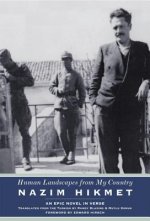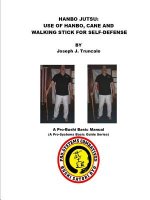
Kód: 08287355
Prediction of Long-Term Strength of Thermoplastic Composites Using Time-Temperature Superposition
Autor James R Reeder
Accelerated tests for composite failure were investigated. Constant ramp transverse strength tests on thermoplastic composite specimens were conducted at four temperatures from 300 F to 450 F and five duration times from 0.5 sec t ... celý popis
- Jazyk:
 Angličtina
Angličtina - Vazba: Brožovaná
- Počet stran: 114
Nakladatelství: Biblioscholar, 2013
- Více informací o knize

Mohlo by se vám také líbit
-

Trust and Partnering with the Joint Team
1646 Kč -

Logistical Support of Amphibious Operations in Atomic and Guided Missile Warfare
1646 Kč -

Remarks on the Trial of the Right Hon. Ann, Countess of Cork and Orrery, for Adultery, and Violating Her Marriage Vow. in a Letter to the Right Honour
361 Kč -

Pleasures of Imagination, Etc.
643 Kč -

Clyde District of Dumbartonshire ... Illustrated, Etc.
781 Kč -

Leonard Peltier, Petitioner, V. United States. U.S. Supreme Court Transcript of Record with Supporting Pleadings
813 Kč -

Competing for Elvis
707 Kč
Darujte tuto knihu ještě dnes
- Objednejte knihu a zvolte Zaslat jako dárek.
- Obratem obdržíte darovací poukaz na knihu, který můžete ihned předat obdarovanému.
- Knihu zašleme na adresu obdarovaného, o nic se nestaráte.
Více informací o knize Prediction of Long-Term Strength of Thermoplastic Composites Using Time-Temperature Superposition
Nákupem získáte 165 bodů
 Anotace knihy
Anotace knihy
Accelerated tests for composite failure were investigated. Constant ramp transverse strength tests on thermoplastic composite specimens were conducted at four temperatures from 300 F to 450 F and five duration times from 0.5 sec to 24 hrs. Up to 400 F, the time-temperature-superposition method produces a master curve allowing strength at longer times to be estimated from strength tests conducted over shorter times but at higher temperatures. The shift factors derived from compliance tests applied well to the strength data. To explain why strength behaved similar to compliance, a viscoelastic fracture model was investigated based on the hypothesis that the work of fracture for crack initiation at some critical flaw remains constant with time and temperature. The model, which used compliance as input, was found to fit the strength data only if the critical fracture energy was allowed to vary with stress rate. Fracture tests using double cantilever beam specimens were conducted from 300 F to 450 F over time scales similar to the strength study. The toughness data showed a significant change with loading rate, less variation with temperature, did not form a master curve, and could not be correlated with the fracture model. Since the fracture model did not fit the fracture data, an alternative explanation based on the dilatational strain energy density was proposed. However the usefulness of this model is severely limited because it relies on a critical parameter which varies with loading rate.
 Parametry knihy
Parametry knihy
Zařazení knihy Knihy v angličtině Society & social sciences Education
1646 Kč
- Plný název: Prediction of Long-Term Strength of Thermoplastic Composites Using Time-Temperature Superposition
- Autor: James R Reeder
- Jazyk:
 Angličtina
Angličtina - Vazba: Brožovaná
- Počet stran: 114
- EAN: 9781288915644
- ISBN: 9781288915644
- ID: 08287355
- Nakladatelství: Biblioscholar
- Hmotnost: 226 g
- Rozměry: 241 × 184 × 6 mm
- Datum vydání: 13. March 2013
Oblíbené z jiného soudku
-

Oxford IB Diploma Programme: IB Economics Course Book
1607 Kč -

Business Partner B1+ Workbook
462 Kč -

Speed and Accuracy: Multiplication
228 Kč -

Powerful Teaching: Unleash the Science of Learning
665 Kč -

Speed and Accuracy: Division
208 Kč -

Read Write Inc. Phonics: Red Ditty Book Bag Books (Mixed Pack of 10)
1955 Kč -

Dancing Heads
368 Kč -

Freiarbeitsmaterial für die Grundschule - Deutsch - Klasse 1/2
604 Kč -

Cambridge IGCSE (R) & O Level Complete Physics: Student Book Fourth Edition
929 Kč -

Business Partner B1 Workbook
434 Kč -

Business Partner B2 Workbook
462 Kč -

Blue Book of Grammar and Punctuation: An Easy- to-Use Guide with Clear Rules, Real-World Examples , and Reproducible Quizzes, Twelfth Edition
393 Kč -

OET Preparation
246 Kč -

KS3 Maths 10-Minute Weekly Workouts - Year 7
199 Kč -

OET Reading Subtest Preparation
343 Kč -

Grade 9-1 GCSE Maths AQA Revision Question Cards - Higher
242 Kč -

Oxford IB Diploma Programme: IB Theory of Knowledge Course Book
1479 Kč -

Positive Discipline Tools for Teachers
429 Kč -

Embodied Teen
545 Kč -

1000 TRIOS or gapped sentences for Cambridge Advanced and Proficiency Exams
608 Kč -

Pearson Edexcel AS and A level Mathematics Statistics & Mechanics Year 1/AS Textbook + e-book
469 Kč -

(ISC) SSCP SG & SSCP Practice Test Kit, 3e
1745 Kč -

Motivation and Reinforcement
1161 Kč -

Pearson Edexcel International GCSE (9-1) English Language B Student Book
1328 Kč -

GCSE Spanish Exam Practice Workbook (includes Answers & Free Online Audio)
220 Kč -

Imagine If...
306 Kč -

Vertical Academy
919 Kč -

Oxford International Primary Maths Second Edition: Practice Book 1
323 Kč -

Vol 2 Blackletter Lettering Adventures
635 Kč -

AS & A Level Maths For Dummies
457 Kč -

Forensic Linguistics Articles
417 Kč -

CompTIA Security+ Review Guide - Exam SY0-601
621 Kč -

Abolition of Man
468 Kč -

Human Landscapes from My Country
658 Kč -

Corrected Squares of The Book of Abramelin
14513 Kč -

Hanbo Jutsu: Use of Hanbo, Cane and Walking Stick for Self Defense
284 Kč -

Reading Mind - A Cognitive Approach to Understanding How the Mind Reads
556 Kč -

KS3 Maths 10-Minute Weekly Workouts - Year 8
199 Kč -

Exam Prep for Microeconomics by Pindyck & Rubinfeld, 6th Ed.
1089 Kč -

North Korea's Military Threat
698 Kč -

Ganzheitliche Sprachförderung
807 Kč -

English Language & Literature WORKBOOK: York Notes for GCSE (9-1)
237 Kč -

Release Your Inner Drive
403 Kč -

Effect of Registration Errors on Tracking in a Networked Radar System
1646 Kč -

Cambridge IGCSE (R) & O Level Complete Chemistry: Student Book Fourth Edition
992 Kč -

Princeton Review SAT Premium Prep, 2021
1134 Kč -

CEH v11 Certified Ethical Hacker Study Guide + Practice Tests Set
1872 Kč -

10 Practice Tests for the SAT, 2021 Edition
839 Kč -

OCP Oracle Certified Professional Java SE 11 Programmer II Study Guide - Exam 1Z0-816 and Exam 1Z0-817
1323 Kč
Osobní odběr Praha, Brno a 12903 dalších
Copyright ©2008-24 nejlevnejsi-knihy.cz Všechna práva vyhrazenaSoukromíCookies



 Vrácení do měsíce
Vrácení do měsíce 571 999 099 (8-15.30h)
571 999 099 (8-15.30h)